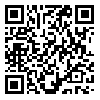Volume 10, Issue 3 (May & Jun 2020)
J Research Health 2020, 10(3): 135-142 |
Back to browse issues page
Download citation:
BibTeX | RIS | EndNote | Medlars | ProCite | Reference Manager | RefWorks
Send citation to:



BibTeX | RIS | EndNote | Medlars | ProCite | Reference Manager | RefWorks
Send citation to:
Ghasemi F, Atarodi A, Hosseini S S. The Relationship Between Religious Attitudes and Death Anxiety in the Elderly People. J Research Health 2020; 10 (3) :135-142
URL: http://jrh.gmu.ac.ir/article-1-1768-en.html
URL: http://jrh.gmu.ac.ir/article-1-1768-en.html
1- Department of Social Sciences, School of Humanities, Islamic Azad University of Gonabad Branch, Gonabad University of Medical Sciences, Gonabad, Iran.
2- Paramedical College and Social Development & Health Promotion Research Center, Gonabad University of Medical Sciences, Gonabad, Iran. ,aratarodi1387@yahoo.com
3- Department of Social Sciences, School of Humanities, Gonabad Branch, Islamic Azad University, Gonabad, Iran.
2- Paramedical College and Social Development & Health Promotion Research Center, Gonabad University of Medical Sciences, Gonabad, Iran. ,
3- Department of Social Sciences, School of Humanities, Gonabad Branch, Islamic Azad University, Gonabad, Iran.
Abstract: (4625 Views)
Background: Late adulthood, as a sensitive life period of humans, requires unique attention. Elderly people are faced with challenging conditions, including death anxiety. This research aimed to investigate the relationship between religious attitudes and death anxiety in the elderly population of Gonabad City, South Khorasan Province, Iran.
Methods: It was a cross-sectional and correlational study. The study sample included 200 adults older than 60 years. The sample is collected from the adult population of Gonabad City using the random sampling method. The obtained data were analyzed with G Power 3.0.10 software. The religious attitudes questionnaire of Khodayarifard et al. was used to evaluate four religiosity dimensions: religious convictions, affections, behaviors, and social pretensions. A high score in each subscale implies greater religiosity tendencies. The Templer questionnaire was also used to assess the anxiety of death. This questionnaire includes the fear of death; the fear of pain and disease; the thoughts of death, passing time, and shortening life; and the fear of the future. The data were analyzed with the Mann-Whitney, Kruskal-Wallis, and Spearman tests.
Results: The religious attitudes were inversely correlated with death anxiety. This implies that the anxiety has decreased as religious attitudes have increased. This research showed a relationship between death anxiety and the population variables (education level, the source of revenue, etc.) This study also indicated a connection between religious attitudes and population variables (marital status, educational level, the source of revenue, lifestyle, and financial status).
Conclusion: According to the present findings, a better religious approach could improve mental health and decrease death anxiety among elderly people.
Methods: It was a cross-sectional and correlational study. The study sample included 200 adults older than 60 years. The sample is collected from the adult population of Gonabad City using the random sampling method. The obtained data were analyzed with G Power 3.0.10 software. The religious attitudes questionnaire of Khodayarifard et al. was used to evaluate four religiosity dimensions: religious convictions, affections, behaviors, and social pretensions. A high score in each subscale implies greater religiosity tendencies. The Templer questionnaire was also used to assess the anxiety of death. This questionnaire includes the fear of death; the fear of pain and disease; the thoughts of death, passing time, and shortening life; and the fear of the future. The data were analyzed with the Mann-Whitney, Kruskal-Wallis, and Spearman tests.
Results: The religious attitudes were inversely correlated with death anxiety. This implies that the anxiety has decreased as religious attitudes have increased. This research showed a relationship between death anxiety and the population variables (education level, the source of revenue, etc.) This study also indicated a connection between religious attitudes and population variables (marital status, educational level, the source of revenue, lifestyle, and financial status).
Conclusion: According to the present findings, a better religious approach could improve mental health and decrease death anxiety among elderly people.
Type of Study: Orginal Article |
Subject:
● Psychosocial Health
Received: 2019/05/7 | Accepted: 2019/07/15 | Published: 2020/06/14
Received: 2019/05/7 | Accepted: 2019/07/15 | Published: 2020/06/14
| Rights and permissions | |
 |
This work is licensed under a Creative Commons Attribution-NonCommercial 4.0 International License. |









